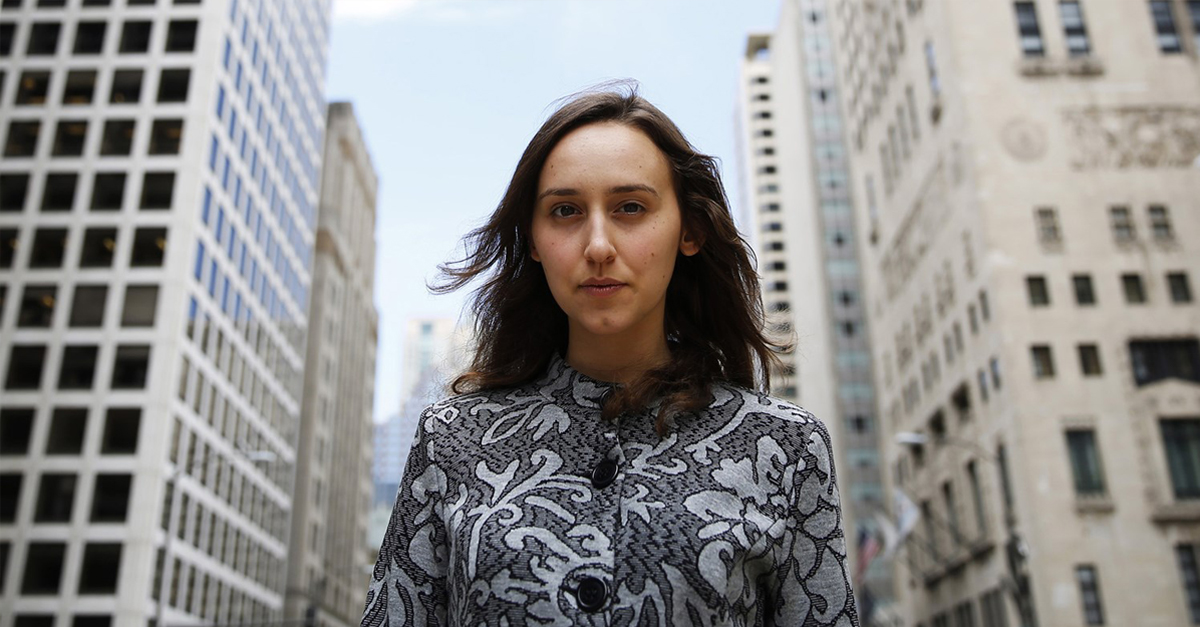One of the things the brilliant minds at MIT do — besides ponder the nature of the universe and build sci-fi gizmos, of course — is notarize aircraft airworthiness for the federal government. So when Sabrina Pasterski walked into the campus offices one cold January morning seeking the OK for a single-engine plane she had built, it might have been business as usual. Except that the shaggy-haired, wide-eyed plane builder before them was just 14 and had already flown solo. “I couldn’t believe it,” recalls Peggy Udden, an executive secretary at MIT, “not only because she was so young, but a girl.”
She’s also caught the attention of some of America’s brightest working at NASA. Also? Jeff Bezos, founder of Amazon.com and aerospace developer and manufacturer Blue Origin, who’s promised her a job whenever she’s ready. Asked by e-mail recently whether his offer still stands, Bezos told OZY: “God, yes!”
But unless you’re the kind of rabid physics fan who’s seen her papers on semiclassical Virasoro symmetry of the quantum gravity S-matrix and Low’s subleading soft theorem as a symmetry of QED (both on approaches to understanding the shape of space and gravity and the first two papers she ever authored), you may not have heard of Pasterski. A first-generation Cuban-American born and bred in the suburbs of Chicago, she’s not on Facebook, LinkedIn or Instagram and doesn’t own a smartphone. She does, however, regularly update a no-frills website called PhysicsGirl, which features a long catalog of achievements and proficiencies. Among them: “spotting elegance within the chaos.”
~~ CHECK THE NEXT PAGE BY CLICKING BELOW ~~
Pasterski stands out among a growing number of newly minted physics grads in the U.S. There were 7,329 in 2013, double the four-decade low of 3,178 in 1999, according to the American Institute of Physics. Nima Arkani-Hamed, a Princeton professor and winner of the inaugural $3 million Fundamental Physics Prize, told OZY he’s heard “terrific things” about Pasterski from her adviser, Harvard professor Andrew Strominger, who is about to publish a paper with physics rock star Hawking. She’s also received hundreds of thousands of dollars in grants from the Hertz Foundation, the Smith Foundation and the National Science Foundation.
Pasterski, who speaks in frenetic bursts, says she has always been drawn to challenging what’s possible. “Years of pushing the bounds of what I could achieve led me to physics,” she says from her dorm room at Harvard. Yet she doesn’t make it sound like work at all: She calls physics “elegant” but also full of “utility.”
Despite her impressive résumé, MIT wait-listed Pasterski when she first applied. Professors Allen Haggerty and Earll Murman were aghast. Thanks to Udden, the pair had seen a video of Pasterski building her airplane. “Our mouths were hanging open after we looked at it,” Haggerty said. “Her potential is off the charts.” The two went to bat for her, and she was ultimately accepted, later graduating with a grade average of 5.00, the school’s highest score possible.
While mentors offer predictions of physics fame, Pasterski appears well grounded. “A theorist saying he will figure out something in particular over a long time frame almost guarantees that he will not do it,” she says. And Bezos’s pledge notwithstanding, the big picture for science grads in the U.S. is challenging: The U.S. Census Bureau’s most recent American Community Survey shows that only about 26 percent of science grads in the U.S. had jobs in their chosen fields, while nearly 30 percent of physics and chemistry post-docs are unemployed. Pasterski seems unperturbed. “Physics itself is exciting enough,” she says. ”It’s not like a 9-to-5 thing. When you’re tired you sleep, and when you’re not, you do physics.”
You need to see this video posted by Sabarina in 2006, where she build an airplane for her dad. Wow!
